
The University of Bologna is a public research university in Bologna, Italy. Founded in 1088 by an organised guild of students (studiorum), it is the oldest university in continuous operation in the world, and the first degree-awarding institution of higher learning. At its foundation, the word universitas was first coined. The university's emblem carries the motto, Alma Mater Studiorum, the date A.D. 1088. With over 90,000 students, the University of Bologna is one of the largest universities in Europe.

Pier Luigi Nervi was an Italian engineer and architect. He studied at the University of Bologna graduating in 1913. Nervi taught as a professor of engineering at Rome University from 1946 to 1961 and is known worldwide as a structural engineer and architect and for his innovative use of reinforced concrete, especially with numerous notable thin shell structures worldwide.
In common usage, technoscience refers to the entire long-standing and global human activity of technology, combined with the relatively recent scientific method that occurred primarily in Europe during the 17th and 18th centuries. Technoscience is the study of how humans interact with technology using the scientific method. Technoscience thus comprises the history of human application of technology and modern scientific methods, ranging from the early development of basic technologies for hunting, agriculture, or husbandry and all the way through atomic applications, biotechnology, robotics, and computer sciences. This more common and comprehensive usage of the term technoscience can be found in general textbooks and lectures concerning the history of science.
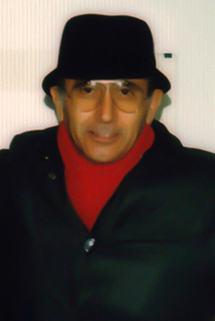
Franco Fontana is an Italian photographer. He is best known for his abstract colour landscapes.
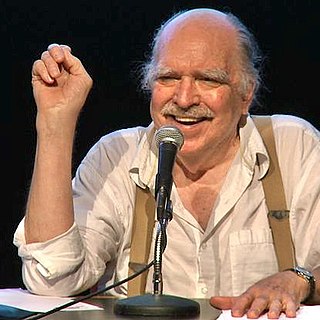
Gene Youngblood was an American theorist of media arts and politics, and a respected scholar in the history and theory of alternative cinemas. His best-known book, Expanded Cinema, was the first to consider video as an art form and has been credited with helping to legitimate the fields of computer art and media arts. He is also known for his pioneering work in the media democracy movement, a subject on which he taught, wrote, and lectured, beginning in 1967.
Expanded Cinema by Gene Youngblood (1970), the first book to consider video as an art form, was influential in establishing the field of media arts. In the book he argues that a new, expanded cinema is required for a new consciousness. He describes various types of filmmaking utilizing new technology, including film special effects, computer art, video art, multi-media environments and holography.

Museo Nazionale Scienza e Tecnologia Leonardo da Vinci in Milan, dedicated to painter and scientist Leonardo da Vinci, is the largest science and technology museum in Italy. It was opened on 5 February 1953 and inaugurated by Prime Minister Alcide De Gasperi.

Francesco Monico is a teacher, researcher, pedagogist in Italy.
Technoetics is a neologism introduced by Roy Ascott, who coined the term from techne and noetic theory, to refer to the emergent field of technology and consciousness research.
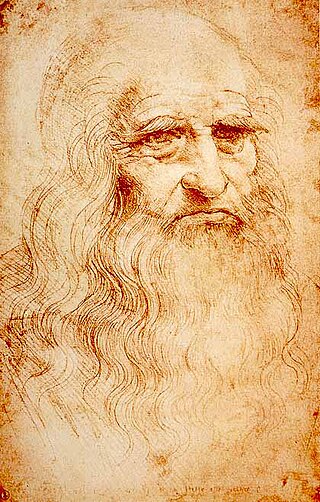
Science and technology in Italy has a long presence, from the Roman era and the Renaissance. Through the centuries, Italy has advanced the scientific community which produced many significant inventions and discoveries in biology, physics, chemistry, mathematics, astronomy, and the other sciences. In 2019, Italy was the 6th world producer of scientific articles publishing more than 155,000 documents. From 1996 to 2000, it published a total of 2 million scientific articles. Italy was ranked 28th in the Global Innovation Index in 2022.
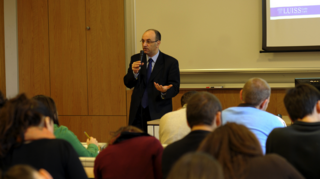
Michele Sorice is an Italian sociologist and political scientist known for his work in the fields of political communication, political science and critical media studies. He is the author of over 25 books and 50 articles.
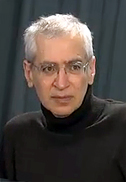
Alan N. Shapiro is an American science fiction and media theorist. He is a lecturer and essayist in the fields of science fiction studies, media theory, posthumanism, French philosophy, creative coding, technological art, sociology of culture, social choreography, software theory, robotics, artificial intelligence, and futuristic and transdisciplinary design. Shapiro's book and other published writings on Star Trek have contributed to a change in public perception about the importance of Star Trek for contemporary culture. His published essays on Jean Baudrillard - especially in the International Journal of Baudrillard Studies - have contributed to a change in public perception about the importance of Baudrillard's work for culture, philosophy, sociology, and design.

Mario Costa was an Italian philosopher. He was known for his studies of the consequences of new technology in art and aesthetics, which introduced a new theoretical perspective through concepts such as the "communication aesthetics", the "technological sublime", the "communication block", and the "aesthetics of flux".
Rocco Sinisgalli is an Italian art historian, writer and architectural theoretician.
Artmedia was one of the first scientific projects concerning the relationship between art, technology, philosophy and aesthetics. It was founded in 1985 at the University of Salerno. For over two decades, until 2009, dozens of projects, studies, exhibitions and conferences on new technologies made Artmedia a reference point for many internationally renowned scholars and artists, and contributed to the growing cultural interest in the aesthetics of media, the aesthetics of networks, and their ethical and anthropological implications.

Victoria Vesna is a professor and digital media artist. She is known for her feminist video, computer and internet art and has been active since the early 1980s. Along with collaborator Jim Gimzewski she is thought to have created one of the first interactive artworks related to nanotechnology and defines her art practice as experimental research.
Media art history is an interdisciplinary field of research that explores the current developments as well as the history and genealogy of new media art, digital art, and electronic art. On the one hand, media art histories addresses the contemporary interplay of art, technology, and science. On the other, it aims to reveal the historical relationships and aspects of the ‘afterlife’ in new media art by means of a historical comparative approach. This strand of research encompasses questions of the history of media and perception, of so-called archetypes, as well as those of iconography and the history of ideas. Moreover, one of the main agendas of media art histories is to point out the role of digital technologies for contemporary, post-industrial societies and to counteract the marginalization of according art practices and art objects: ″Digital technology has fundamentally changed the way art is made. Over the last forty years, media art has become a significant part of our networked information society. Although there are well-attended international festivals, collaborative research projects, exhibitions and database documentation resources, media art research is still marginal in universities, museums and archives. It remains largely under-resourced in our core cultural institutions.″

Nina Czegledy is a Canadian artist, new media art curator and writer.
Mauro Wolf was an Italian sociologist, professor and essayist. He has developed important works in the field of sociology of communication and the media. His books are now considered classical texts in theoretical research on mass communication.
Pino Grimaldi, born Giuseppe Grimaldi, was an Italian designer and academic.











